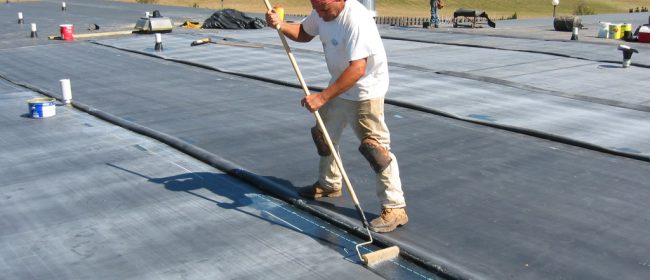When commercial property managers across the country consistently choose the same roofing solution year after year, there’s usually a compelling reason behind that loyalty. Enter EPDM (Ethylene Propylene Diene Monomer) roofing—a synthetic rubber membrane that has quietly revolutionized the commercial roofing industry over the past four decades. While other roofing materials come and go with fleeting trends, EPDM has maintained its position as the go-to choice for savvy building owners who demand reliability, longevity, and cost-effectiveness from their roofing investment.
What Makes EPDM Roofing Stand Out
EPDM is a single-ply rubber roofing membrane that’s typically black in color and available in various thicknesses, most commonly 45 mil and 60 mil. This synthetic rubber compound is engineered to withstand extreme weather conditions while maintaining its flexibility and protective properties for decades. Unlike traditional built-up roofing systems that require multiple layers of materials, EPDM provides complete protection with just one membrane layer.
Composition and Construction
The magic of EPDM lies in its molecular structure. This synthetic rubber is formulated to resist ozone, ultraviolet radiation, and temperature extremes that would quickly deteriorate other materials. The membrane comes in large sheets that can cover extensive areas with minimal seams, reducing potential failure points and creating a more reliable waterproof barrier.
Versatile Applications
EPDM works exceptionally well on low-slope and flat commercial roofs, making it ideal for warehouses, office buildings, retail centers, and industrial facilities. Its adaptability allows it to conform to various roof shapes and configurations, including complex designs with multiple penetrations for HVAC equipment, skylights, and other building systems.
The Economic Advantages of EPDM Systems
Commercial property owners gravitate toward EPDM roofing because it delivers exceptional value over its lifespan. The initial investment is typically lower than many alternative roofing systems, but the real savings emerge over time through reduced maintenance costs and extended service life.
Installation Efficiency
A qualified EPDM roofing contractor can install these systems relatively quickly compared to multi-layer alternatives. The large membrane sheets minimize the number of seams required, and the installation process doesn’t depend on specific weather windows like some other roofing materials. This efficiency translates to lower labor costs and reduced disruption to business operations during installation.
Long-Term Cost Benefits
EPDM roofs routinely last 20-30 years or more with proper maintenance, providing predictable performance over their service life. The material’s resistance to thermal shock—the expansion and contraction that occurs with temperature changes—means fewer repairs and replacements compared to more rigid roofing systems. Additionally, EPDM’s reflective properties can be enhanced with coatings, potentially reducing energy costs in warmer climates.
Performance Characteristics That Matter
The popularity of EPDM stems largely from its ability to perform consistently across diverse environmental conditions. This reliability gives building owners confidence that their roof will protect their investment regardless of what nature throws at it.
Weather Resistance
EPDM’s synthetic rubber composition provides superior resistance to hail, wind, and temperature extremes. The material remains flexible even in sub-zero temperatures, preventing the cracking and brittleness that plague other roofing materials in harsh winter conditions. During summer heat waves, EPDM maintains its integrity without softening or becoming susceptible to damage from foot traffic or equipment placement.
UV and Ozone Protection
Unlike natural rubber or some synthetic materials, EPDM contains carbon black and other additives that provide exceptional protection against ultraviolet radiation and ozone exposure. This resistance prevents the premature aging and deterioration that can occur with prolonged sun exposure, ensuring the membrane maintains its protective properties throughout its service life.
Maintenance Simplicity
EPDM roofs require minimal maintenance when properly installed by an experienced EPDM roofing contractor. Periodic inspections to check seams and penetrations, along with basic cleaning to remove debris, are typically sufficient to maintain optimal performance. When repairs are needed, they’re usually straightforward and cost-effective to execute.
Choosing the Right EPDM Installation Partner
The success of any EPDM roofing system depends heavily on proper installation techniques and quality workmanship. Working with a certified EPDM roofing contractor ensures that the system is installed according to manufacturer specifications and industry best practices.
Professional Expertise Matters
Experienced contractors understand the nuances of EPDM installation, from proper substrate preparation to seam welding techniques. They can also identify potential issues before they become costly problems and recommend the most appropriate EPDM system configuration for specific building requirements and local climate conditions.
EPDM roofing has earned its popularity in commercial applications through decades of reliable performance, cost-effectiveness, and adaptability. As building owners continue to seek roofing solutions that balance initial investment with long-term value, EPDM remains a proven choice that delivers on its promises.
